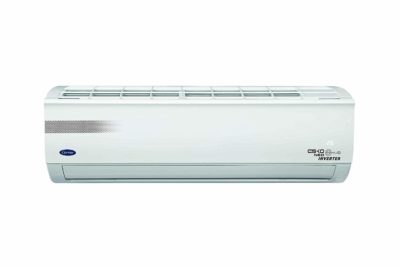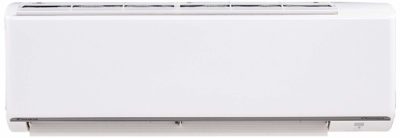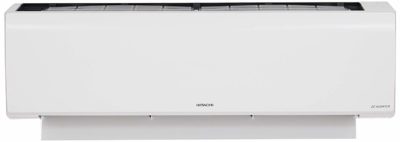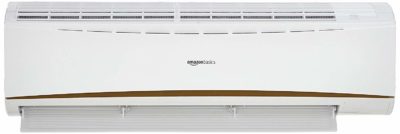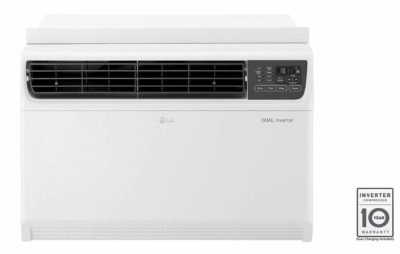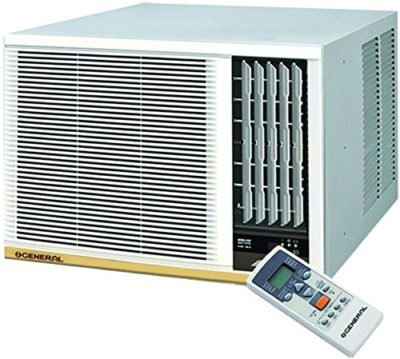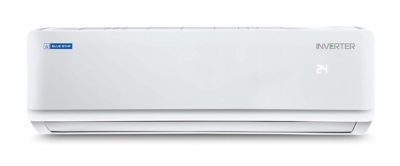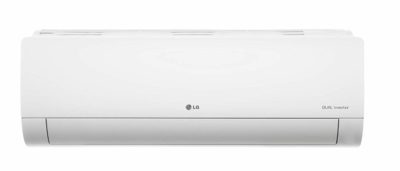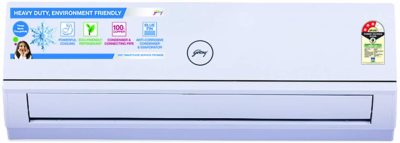Best Air Conditioners Under Rs 50,000
Air conditioners can be a great joy when added to your home’s inventory, especially during the scorching heat of the summer. They are simply a great technology that keeps your home and work environment as comfortable as possible if the right choice is made.
However, landing the perfect machine isn’t always a walk in the park as these devices can be tricky to understand due to the seemingly complicated technology behind their functionality. This guide is all about assisting you with making the best decision possible by discussing everything you need to know about these machines.
The first few minutes will be spent on understanding the key principles behind air conditioners’ functionality, types, how to buy air conditioners while the second option will look at some of the leading air conditioners online on the current market along with frequently asked questions. Let’s get started.
10 Best Air Conditioners Under Rs 50,000
| Product | Best Price |
|---|---|
Our Pick | |
Ultra-sleek Finish | |
Daikin Ftkf50tv | |
Powerful Performance | |
Solid Construction | |
Top Notch Efficiency | |
Cost-effective | |
Versatile | |
Great Functionality | |
Beautifully Constructed |
The Difference between Rs. 50,000 and Rs. 30,000 Air Conditioners
Before we get into the ins and outs of what to look for when choosing air conditioners under the INR 50,000 price mark, let’s have a look at the general differences between conditioners within this price range and those under the INR30,000 price range. In other words, let’s try to answer the question:
How are air conditioners within this price range different from the less costly products below the INR30,000 mark.
The major differences between these categories are observed in the key features. The most notable are the overall capacity, energy efficiency, and functionality.
Capacity
Air conditioners’ capacities are defined in terms of tonnage and recommended room size. In general, tonnage describes the overall power that the conditioner uses, and room size describes the appropriate area, usually in terms of square meters or square feet.
Air cons within the INR 50,000 category tend to have at least 1,5 tonnage, and room sizes tend to fall somewhere at or above 111 square meters. On the other hand, those within the INR 30,000 range tend to have lower ratings; usually at 1 ton and recommended area size of up to 110 square meters. This implies that INR50,000 air conditioners are generally more powerful than INR30,000 devices.
Energy Efficiency
Energy efficiency is another critical factor in air conditioning systems, as it directly affects the daily running costs of your machine. Air conditioners’ ability to save running costs depends on their ability to run efficiently. That is, running at optimal levels at the lowest possible energy expenditure. The differences in this ability are reflected in the price ranges as well.
Air cons within the INR 50,000 range tend to be reinforced with superior energy saving features which make them better energy savers. This reflects in the energy star ratings associated with the devices. For instance, it is quite easy to find a 5 star air conditioner in conditioners within the vicinity of INR 50,000 than it is in the INR30,000 range. Additionally, the average ISEER and SEER ratings in INR50,000 devices tend to be higher.
Range of Functionality
Another key difference observed in the two categories is the diversity of functional features they bring on the table. Air conditioners within the INR,5000 range tend to incorporate a wider range of additional functionalities to cooling.
These include advanced filters that can get rid of a wider range of particles from the air, dehumidifiers, and purifiers. On the other hand, most devices within the INR30,000 tend to be limited to cooling and basic filtering.
Controls and Additional Features
Another key difference between the two categories is that conditioners within the INR50,000 range tend to offer more control to users for added convenience and performance levels. Key examples include features such as self diagnosis, automatic mode, presence detectors and adjustable louvers.
Types
There is a myriad of shapes and sizes for air conditioners, but they are broadly classified into three main categories. Let’s get through a round-up of each type.
Portable Air Conditioners
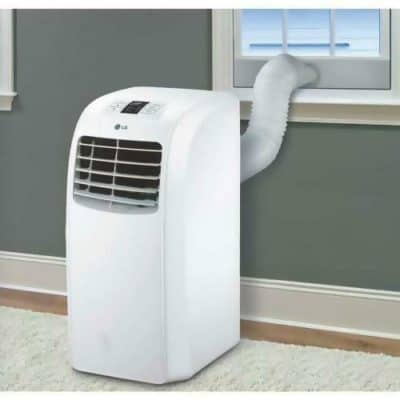
As the name suggests, these present a more mobile and lighter option for those in need of a device they can easily shift around the home or office. They are smaller, lighter, and almost always come with castor wheels for easy mobility.
Their mechanism is based on the same principle but on a smaller scale. Upon sucking the air in, they run a similar cooling process and blows it back out into the surrounding
These conditioners are generally cheaper and ideal if you are in for an inexpensive device to use for moderate cooling. The downside with these conditioners is that they tend to have lower capacities than window and split systems, and need to be placed at an outlet portal such as a window.
Window Air conditioners
Window air conditioners are simpler air conditioning systems than split air conditioners. As suggested by the name, they are mounted on window frames or special holes through the wall. Unlike split ACs, Window conditioners present a single unit which houses all the essential functional components.
The unit is divided into front and back panels. The front panel is the part that’s visible from the inside, and it features an interface that can be controlled electronically or mechanically. Older units usually feature analog controls such as knobs and buttons, whereas newer units may incorporate remote control mechanisms and touch panels. Another prominent feature is a set (s) of louvers which can be adjusted to control airflow.
Mechanical air conditioners are generally less costly than electronic types. If all you are looking for is a machine to simply get the job done, mechanical conditioners can be a great fit. In addition to the front panel, the indoor side of the Window conditioner includes components such as the Cooling Coil, Fan Blower, Capillary Tube, Operation Panel, Filter Dryer and a Drain Pan. Outdoor side components include the compressor, condenser coil, propeller fan, and fan motor.
When compared to split conditioners, these prove to be more affordable, easier to install, and require less space. However, they tend to lag behind when it comes to power, energy efficiency, and extra functionality. Additionally, like split air cons, you will need professional assistance to get them up and to run.
Split System Conditioners
As briefly discussed above, these come in as two piece units with an indoor and outdoor component. They are definitely the best fit for most modern homes as they tend to afford an elegant look rarely seen in window systems. Top notch operating power and energy efficiency are some of the highlights of these devices. Additional features and power come at a higher cost, and they generally need more space.
Ductless Systems
These can be considered as modified split systems, as they feature an outdoor system that connects with a number of hubs that are placed in several rooms to provide a well-rounded cooling effect.
This setup affords a more uniform cooling effect throughout the building, which is a huge plus, as most systems struggle to achieve the same effect. A major concern with these systems is that they are not the best when it comes to cost, as they generally come with an inflated price tag when compared to window systems.
Central Air Conditioners
This type of air conditioner uses a network of supply and return tubes/ducts to circulate cool and warm air. The supply system consists of ducts and a series of openings known as registers, which can be found on walls and other barriers.
These direct air to different parts of the home. The return system consists of the same elements but moves air in the opposite direction (from the building to the conditioning unit).
The main air conditioning unit can be packaged in a single panel, as in Window air conditioners, or split between the indoor and outdoor compartments.
Hybrid Air Conditioners
Unlike other types, this type is based on the primary source of energy for powering up the compressor. The mechanism is quite similar to hybrid cars, which combine a gas engine and an electric motor that works alternately based on the conditions.
The Hybrid air conditioning system combines a gas powered engine, and an electricity powered motor as sources of energy for the compressor. The two energy sources may be contained in a single or separate compartment depending on the manufacturer’s preference.
Buying Guide: How Exactly Do You Go about Choosing the Right Device?
Buying the right air conditioning unit involves having clear answers to a number of fundamental questions. You need to know the best type of air conditioning system for your home, the associated cost, capacity, installation, and available functionalities.
Key situational factors you need to be clear on including the number of rooms in need of the unit’s service, the kind of ventilation system in the home, the actual size of the rooms, design, and the available electricity circuit.
For larger rooms and homes in general, more powerful units with an inflated price tag usually provide the best fit as they typically afford the needed capacity to cover the greater space.
On the other hand, medium and smaller rooms such as regular living rooms or kitchens do pretty well with smaller systems which typically feature smaller capacities. Here is a round-up of key questions relating to situational factors you need to consider before you get into specific details.
How Big Is the Area or Room under Consideration?
The kind and amount of space to be cooled varies with different individuals thus there is no one-size-fits-all air conditioning solution. For instance, while you may be looking to cool nothing other than a garage, another individual may only be concerned with keeping things under control in their bedroom.
Therefore, you really need to objectively define the size of the intended area as air cons’ capacities are mostly defined by the maximum amount of space they can efficiently operate in.
How Is the Room Designed, and What Sort of Building Materials Were Used?
The material employed in the building’s construction should be one of the key things to consider. For instance, brick-walled buildings have a greater capacity to absorb and retain heat than modern buildings, which mostly utilize specially prepared compounds within the walls aimed at reflecting heat.
Therefore, you definitely need to exercise due diligence and have a clear look at how the structure of your building will interact with your air conditioning system. In cases where you are not sure, there is a number of air conditioning companies dedicated to services such as professional inspections and recommendations.
Consider the Location and Climate
The general climate is a huge factor as it’s directly related to the functional features you may need to prioritize. For instance, highly humid environments may require a conditioner that goes beyond cooling and incorporate a powerful dehumidification mechanism.
On the other hand, constantly hot areas may require something with powerful cooling functionality. Therefore, factoring in the kind of climate allows you to choose a model that adequately addresses the climate and environmental related challenges.
The Kind of Space Available for the Conditioner
This is especially relevant when it comes to choosing the right type. In general, split system air conditioners naturally require more space as they come in two units. Therefore, compact areas with little outside space may not always be the best for split air conditioners.
In cases where neither split or Window air conditioners offer the best option, there is a range of portable and ductless units on the market to suit more limited environments.
Cost
When it comes to cost, there are two main things you need to make sure to get 100 percent right, and these are the upfront and running costs. On upfront cost, you need to make sure that you’re getting the right value for how much you are paying. As expected, air cons with a greater range of functionality, energy efficiency, and power tend to cost more. However, not everything with an inflated price tag provides greater value.
First of all, define the kind of AC you need in terms of functionality and capacity, then proceed to compare the kind of prices available on the market. For instance, if the intended area is somewhere above 150 square meters and your weather keeps fluctuating between hot and highly humid conditions, you need to consider an air con with a powerful cooling and dehumidification system. Upon defining this, you need to compare the prices of models that provide a fitting profile.
Energy Efficiency: Overall Running Cost
Being a device that runs over extended periods of time, there are cost implications that any buyer needs to be aware of. Great air con should be able to provide optimal performance at a minimal cost.
The best way to have an idea of a particular air conditioner’s efficiency is to look at the Seasonal Energy Efficiency Ratio (SEER) or the Energy Star rating. The SEER rating is often indicated by manufacturers on the product’s specs list and it generally relates the cooling output to electrical consumption in a typical season.
In general, a greater value means more efficiency, and any reasonably efficient conditioner should fall somewhere between 13 and 21. Those falling somewhere between 16 and 21 are considered high efficiency machines. Generally, the greater the SEER, the greater the efficiency.
Another commonly used parameter is the Indian Seasonal Energy Efficiency Ratio (ISEER) which relates the total heat removed to the conditioner’s total energy expenditure. Great split air conditioners should fall somewhere between 3.5 and 4.5 while Window conditioners should fall within the 2.9 to 3.0 range.
Energy Star ratings provide a simpler way of measuring the machine’s energy efficiency. The machine is designated a certain number of stars based on its overall performance. In general, a great device should have an energy rating of greater than 3 stars.
Capacity and Range
Defining the best capacity for specific needs can be a maze for most beginners. If you take some time to look at the specs lists of most devices, you’ll often come across the term “tonnage.” The tonnage rating furnishes an idea on the air cons overall power and performance, and like energy efficiency values, the greater the number, the better. Most highly esteemed machines feature ratings of at least 1.5 ton.
The size of your area should be considered together with the tonnage rating. As a guideline, a 1 ton rating is ideal for a room of not more than 400 square meters. However, it’s important to remember that this is a guideline that should be considered together with other situational factors.
Extra Features
Air conditioners have been advancing with the rest of the technology landscape, as evidenced in the emergence of highly versatile and smarter systems on the market. A number of great features can be worth a look if you expect your machine to do much more than just cooling.
Filters
Filters add on to the overall quality of air by getting rid of foreign particles including dust, unpleasant smells, smoke, and in some cases, bacteria.
Dehumidifier
Dehumidifiers are fast becoming a staple due to the notable effect they have in highly humid environments. A dehumidification-enabled device helps to remove the heaviness and unpleasant feel that comes with moisture infested air.
Sensors
These assist with saving energy and keeping the air con as safe as possible. Good examples include presence sensors, which detect the presence of individuals and adjust accordingly.
Adjustable Louver Systems
These allow the user to change the orientation of the louvers to achieve the desired effect. For instance, they may be set to deflect the outlet air towards a targeted area within the room, or set at a uniform orientation to achieve a uniform flow of air.
Warranty
It’s always prudent to ensure that your investment is protected by looking at the warranty package on the specs list. No matter how good the brand is, there is always the possibility of buying a defective product.
The only way to avoid this pitfall is to check the specs section if it has any information pertaining to warranty. Great products have at least a 1 year general period for the whole product and an exclusive offer for the compressor. Some may even take it further to include another exclusive offer for the condenser. In general, the more comprehensive it is, the better.
Top 10 Air Conditioners Under Rs 50,000
1. Voltas 1.5 Ton 3 Star Air Conditioner – Our Pick
The Voltas 183VDZU furnishes a great mid-range model especially for those looking to get something that affords great functionality without demanding a heavy upfront investment. This Voltas air conditioner is widely considered a perfect blend of efficiency and top-notch design. Let’s get into the specifics.
Design
It’s a split air conditioner by design, incorporating an ultra-sleek indoor unit with a medium sized frame that measures 21.5 x 96.5 x 31.9cm and 48.4kg in terms of dimensions and weight respectively. The setup is quite standard for split air conditioners, which typically place the inlet panel on top while the outlet panel occupies the base.
- Capacity and room size: 1.5 ton, 111-150 sq feet.
- Energy efficiency rating: 3 star, ISEER: 3.8.
- Refrigerant: R410A.
- Compressor type: Inverter.
- Condenser coil material: Copper
- Extra functionality: Filter, dehumidifier, torque control, automatic louver, self diagnosis.
- Warranty: 1 year for product, 1 year for condenser, 5 years for the compressor.
- High-end range and capacity: It features one of the highest tonnage ratings for home-based air conditioners.
- Energy Efficient: The device is energy star certified and comes with a great star rating thus indicating for a highly economical device.
- Multi-functional: It comes in with a wide range of extra functionality and control features.
- Durable: It features a solid construction along with high quality and durable material.
- Comprehensive warranty package: It provides ample coverage for all key components as well as the product as a whole.
- It’s generally not an ideal choice for larger rooms.
2. Carrier 1.5 Ton 5 Star Air Conditioner – Ultra-sleek Finish
This model bears proof of Carriers ability to produce commendable split systems as the brand is mostly associated with Window air conditioners. A commendable functional range, superior exterior design, and a favourable price tag stand as its main attractions. Let’s step closer and take a look.
Design
A sleek, all-white exterior adorns the product as it maintains the general setup which involves a top-placed air inlet, a mid-section with an engrained LED display and a base that holds a set of louvers for the outlet panel. The unit measures 80 x 27.5 x 18.8cm as the weight lingers at around at 9kg.
- Capacity: 1.5 ton, 111-150 sq meters.
- Energy efficiency rating: 5 star, ISEER: 4.62.
- Refrigerant: R32.
- Compressor type: Inverter.
- Condenser coil material: Copper
- Extra functionality: Filter, dehumidifier, purifier.
- Warranty: 1 year on product, 1 year on condenser, 10 years on compressor.
- Great range: It comes in with a high capacity and range to cover for a wide variety of room sizes.
- Multi-functional: It extends its functionality to purification and dehumidification thus making it a versatile device to run in different conditions.
- Great energy consumption: It is energy star certified and features a great rating for a highly economical but efficient runtime.
- Reliable: It comes in with solid construction and great material for enhanced longevity.
- It occupies the upper part of the price range.
3. Daikin 1.5 Ton 5 Star Air Conditioner – Impeccable Range
Daikin has proven itself a key player on the air conditioning systems landscape due to a range of highly esteemed products it has churned out over the past few years. This model demonstrates the brand’s ability to balance cost and value through a powerful feature set and a relatively affordable price tag. Let’s get into the ins and outs of the machine.
Design
It’s a split conditioning system featuring a sleek indoor unit which adopts the basic component setup for split conditioners. At the top, a set of louvers mark the inlet portal whereas the base features a retractable set of outlet louvers.
The conditioner has a medium footprint, which measures 80×29.8×22.9 cm in width, depth and height. The outdoor unit adopts the same standard design in a frame that measures 84.5×30×59.5cm.
- Capacity and room size: 1.5 ton, up to 111-150 square feet.
- Energy efficiency rating: 5 star, ISEER: 5.33.
- Refrigerant: R32.
- Compressor type: Inverter.
- Condenser coil materials: Copper
- Extra functionality: Air filtration, On-board stabilizer, econo-mode.
- Warranty: 1 year on product, 1 year on condenser, 5 years on compressor.
- High capacity, wider coverage: It features a high tonnage rating along with a wider range in terms of coverage.
- Lower running cost: It has a good energy star rating and features the econo-mode for optimal performance at considerably lower power consumption.
- Durable: It is solidly built and features high quality build material.
- Comprehensive warranty package: It affords ample coverage for all key components and the product in its entirety.
- It lacks a LED display, which can be a great feature when controlling the device remotely.
4. Hitachi 1.5 Ton 5 Star Air Conditioner – Powerful Performance
Hitachi presents another brand that has earned a good reputation in the air conditioning industry through a series of advanced products it has produced in recent years. This is one of the models which have demonstrated remarkable success on the market due to the power and superior design it affords.
Design
As a split system, the indoor unit adopts the basic setup of split air conditioning systems and adds in an attractive, all-white exterior surface which accounts for the machine’s great look. It measures 25 x 97 x 29cm in dimensions while the weight is placed at around 13kg.
- Capacity and room size: 1.5 ton, up to 111-150 square feet.
- Energy efficiency rating: 5tar, ISEER: 4.7.
- Refrigerant: R410A.
- Compressor type: Inverter.
- Condenser coil material: Copper
- Extra functionality: On-board stabilizer.
- Warranty: 1 year on product, 1 year on condenser, 5 years on compressor.
- High capacity: The high tonnage rating affords a powerful performance in a relatively wide coverage range.
- Economical: Top-of-the-range energy efficiency for an incredibly lower cost at optimal performance levels.
- Durable: It comes in with a solidly built frame and sturdy system for a longer lifespan.
- Great warranty: It affords adequate time coverage for all the key components.
- Limited functionality as it only features cooling in its functional feature set.
5. Amazonbasics 1.5 Ton 3 Star Air Conditioner – Solid Construction
AmazonBasics furnishes a flash of brilliance in this price range through this highly affordable unit with a great feature set. As it is with most products from the brand, its superior feature set is substantiated by a great overall response from current users. Let’s get into further details.
Design
Like all split air cons on the list, it plays by the rules as its design follows the same blueprint by leaving the inlet panel and associated louvers on top, whereas the outlet louvers accommodate the base. Just adjacent to the outlet panel on the right, a small inbuilt LED display provides basic visual feedback as you carry out the settings. In terms of size, the machine measures 80.5 x 19.4 x 28.5 cm while the total weight lingers at 8.2 kgs.
- Capacity and room size: 1.5 ton, up to 180 square feet.
- Energy efficiency rating: 3 star, ISEER: 3.56.
- Refrigerant: R32.
- Compressor type: Inverter.
- Extra functionality: filtration, sleep and energy modes, antifungal coating.
- Warranty: 1 year for product, 5 years for the compressor.
- High-end capacity: It features one of the highest tonnage ratings on the list combined with an effective extended range.
- Economical: It is a 3 star rated, thus being a provably economic device to run on a regular basis.
- Durable: It affords a well-built structure and highly resistant material.
- Attractive: It’s a beautifully crafted device for home settings.
- Unlike most devices with more or less the same quality, it lacks condenser coverage in the warranty package.
6. Lg 1.5 Ton 5 Star Air Conditioner – Top Notch Efficiency
LG air conditioner edges most brands in the air conditioning space due to the fact that it has managed to pull off great products in both split and window categories. This powerful device from the brand bears testimony to its unwavering commitment to producing ultra-efficient products with a demonstrable positive track record. Let’s dive into the details for a better appreciation of its prowess.
Design
The general design is a bit different from the standard design seen in most Window air conditioners such as the Carrier Estrella. The frontal aspect accommodates two sets of louvers which mark the inlet and outlet panels.
The first set of louvers is situated just adjacent to the control panel on top, while the second set (outlet) occupies the base. The exteriors are covered in an all-white finish which is basically a huge part of the impressive look it affords for a window AC. When it comes to size, the AC’s dimensions measure 66.6 x 66 x 45 cm while the weight is placed at around 50kg.
- Capacity and room size: 1.5 ton.
- Energy efficiency rating: 3 star.
- Compressor type: Rotary.
- Condenser coil material: Copper
- Extra functionality: Cooling, filtration.
- Warranty: 1 year for product, 10 years for the compressor with charging.
- Enhanced capacity: It comes with a high tonnage rating and size range for a window AC.
- Economical: It is energy certified and comes in with a great star rating to indicate for a low-cost but enhanced performance.
- Durable: It features a cohesively built unit at both the structural and functional levels.
- Aesthetic design: The design affords a great look for modern room decors and settings.
- Functionality is limited to cooling and filtration, which is on the downside when compared to similarly priced devices.
7. O General 1.5 Ton 3 Star Air Conditioner – Cost-effective
The O general simply provides a great option for those looking for a more rugged device that is designed to simply get the job done. It is one of the few window air conditioners which made it on the list due to a great reputation and a rare knack for top-notch performance and solidity. Let’s have a closer look.
Design
It takes the usual design and setup observed in window systems, which is typically characterized by a two-part frontal aspect. The right side holds the inlet panel which is marked by a set of vertical louvers, while the left side is marked by a larger set of horizontal louvers.
An all-white finish covers the exteriors except for the control panel area when it comes to size, the air con measures (71 x 67 x 46cm) while the weight is placed at around 56 kg.
- Capacity and room size: 1.5 ton.
- Energy efficiency rating: 3 star.
- Compressor type: rotary.
- Condenser coil material: Copper
- Extra functionality: Cooling, filtration, auto-restart and sleep mode.
- Warranty: 1 year for product, 5 years for the compressor.
- Great capacity: It has a high tonnage rating and wide coverage than most window ACs.
- Lower running cost: It features a great energy star rating to ensure minimal cost at optimal performance.
- Affordable: It comes with a favourable price tag for limited budgets.
- Limited functionality.
8. Blue Star 1.2 Ton 3 Star Air Conditioner – Versatile
An ample feature set and an incredible design make this device a great addition to most modern homes. Like most successful products, a positive reputation is there for all to see on popular review sites. Let’s get into the associated details.
Design
A beautiful all-white exterior is perhaps the most notable design feature. Otherwise, the basic setup doesn’t really offer many peculiarities when compared to all split models we’ve considered so far. The unit measures 802mm in width,189mm in depth and 297mm in height.
- Capacity and room size: 1.2 ton.
- Energy efficiency rating: 3 star
- Refrigerant: R32.
- Compressor type: Inverter.
- Extra functionality: Air filtration, self diagnosis, iFeel technology (detects temperature around the user and adjust accordingly), auto-restart.
- Warranty: 1 year on product, 1 year on condenser, 10 years for the compressor.
- Efficient: It comes with a great capacity rating for medium use cases.
- Energy efficient: It is a 3 star energy certified thus it operates at a lower running cost.
- Great warranty package: It has an ample provision of time for all the key components.
- Beautifully designed: The associated aesthetics makes it a great fit in most modern settings.
- Additional functionalities such as purification and dehumidification would be a great addition.
9. Lg 2 Ton 3 Star Air Conditioner – Great Functionality
This is essentially another representation of LG’s prowess in manufacturing powerful and highly versatile products. It boasts of a powerful system, as evidenced by the tonnage rating, as well as a great range of capabilities rarely seen in most devices. Let’s get to a closer consideration.
Design
Though with a standard setup for split air conditioners, it affords a great feel and sleekness befitting a high-end product. The all-white exterior accommodates a top placed set of louvers to mark an air inlet portal and an outlet that occupies the base of the machine. The device measures at 998mmin total width, 330 mm in total depth, and 210mm in height.
- Capacity and room size: 2 ton, up to 151-200 square feet.
- Energy efficiency rating: 3 star, ISEER: 3.72.
- Refrigerant: R32.
- Compressor type: Dual Inverter.
- Condenser coil material: Copper
- Extra functionality: Air filtration, dehumidification, purification and antibacterial coating.
- Warranty: 1 year on product, 10 years for the compressor.
- High capacity and wider coverage: A 2 tonnage rating along with a 151-200 square feet range sets it apart as one of the most powerful and efficient devices around.
- Economical: The energy star and ISEER rating suggest a lower cost unit to run.
- Reliable: It is well-built and features highly resistant material for enhanced longevity.
- Ample warranty package: Its warranty package affords ample time for the compressor and whole product.
- Outdoor unit shows issues at times
10. Godrej 2.3 Ton 3 Star Air Conditioner – Beautifully Constructed
Godrej has its mark in the air conditioning industry through this incredible design, which boasts of a remarkable power while tagged with a price that should fit in pretty well with mid-range budgets. Let’s go through a round-up of its key features.
Design
The general design isn’t much of a new spectacle among split air conditioners as it incorporates the same basic setup. However, the brand still managed to squeeze in a great deal of sleekness and solidity through an exquisite outer coating and sturdy construction. The dimensions measure 35cm x 1.15 m x 41.3 cm while the weight lingers at around 16kg.
- Capacity and room size: 2.3 ton, up to 151-200 square feet.
- Energy efficiency rating: 3 star, ISEER: 3.55.
- Refrigerant: R32.
- Compressor type: Inverter.
- Functions: Cooling, Filtration, purification.
- Condenser coil material: Copper
- Warranty: 1 year for product, 1 year for condenser, 7 years for the compressor.
- Enhanced range and overall capacity: It affords the best tonnage and range on the list so far thus effectively making it one of the most powerful devices on the market.
- Energy efficient: The energy efficiency rating indicates a less costly device to run on a daily basis.
- Reliable: It’s a cohesively built unit in terms of both structure and function.
- Comprehensive warranty package: It affords ample time for all the key components and the whole product.
- When it comes to looks compared to the price, it could have been much better.
Frequently Asked Questions
1. What’s the best air conditioner on the current market?
Though there is a great range of products offering great features, the best product will always depend on your case. As we saw in the buying guide towards the beginning of the review, there is quite a number of factors that affect the air conditioner’s functionality and suitability to your needs. Start by defining what you need, and set out to get the product which best provides for those needs.
2. Which conditioners are the most energy efficient?
5 star conditioners offer the best chance of an ultra-energy efficient machine. Ideally, you can compare the conditioners using different rating systems. The most consistent ones tend to provide optimal efficiencies.
Conclusion
Getting your fingers on the best air conditioning unit for your needs is about having a basic understanding of how these systems work, the factors which drive their appropriateness in different settings, and working knowledge on the current market’s leading models. By walking you through all these key aspects, we believe you should have something to hold on to for a little confidence when faced with a myriad of products from the market.
Hopefully, from the above mentioned top 10 Best air conditioner under 50000, making a choice will not become a problem. From these, our top 3 expert picks include Voltas 1.5 Ton 3 Star Inverter Split AC, Carrier 1.5 Ton 5 Star Inverter Split AC and Daikin 1.5 Ton 5 Star Inverter Split AC. So, all the best as you move forward to get one of your own.







